Renal Diet Menu Maker
You're in luck, managing your chronic kidney disease just got easier.
Let's talk about a way to create a Renal Diet Menu Maker, your personalized guide to navigating a renal diet with confidence using healthy recipes.
It'll help you balance salts, proteins, and other key essential nutrients, ensuring your meals support your well-being.
With this tool, you'll craft a menu that's as tasty as it is kidney-friendly.
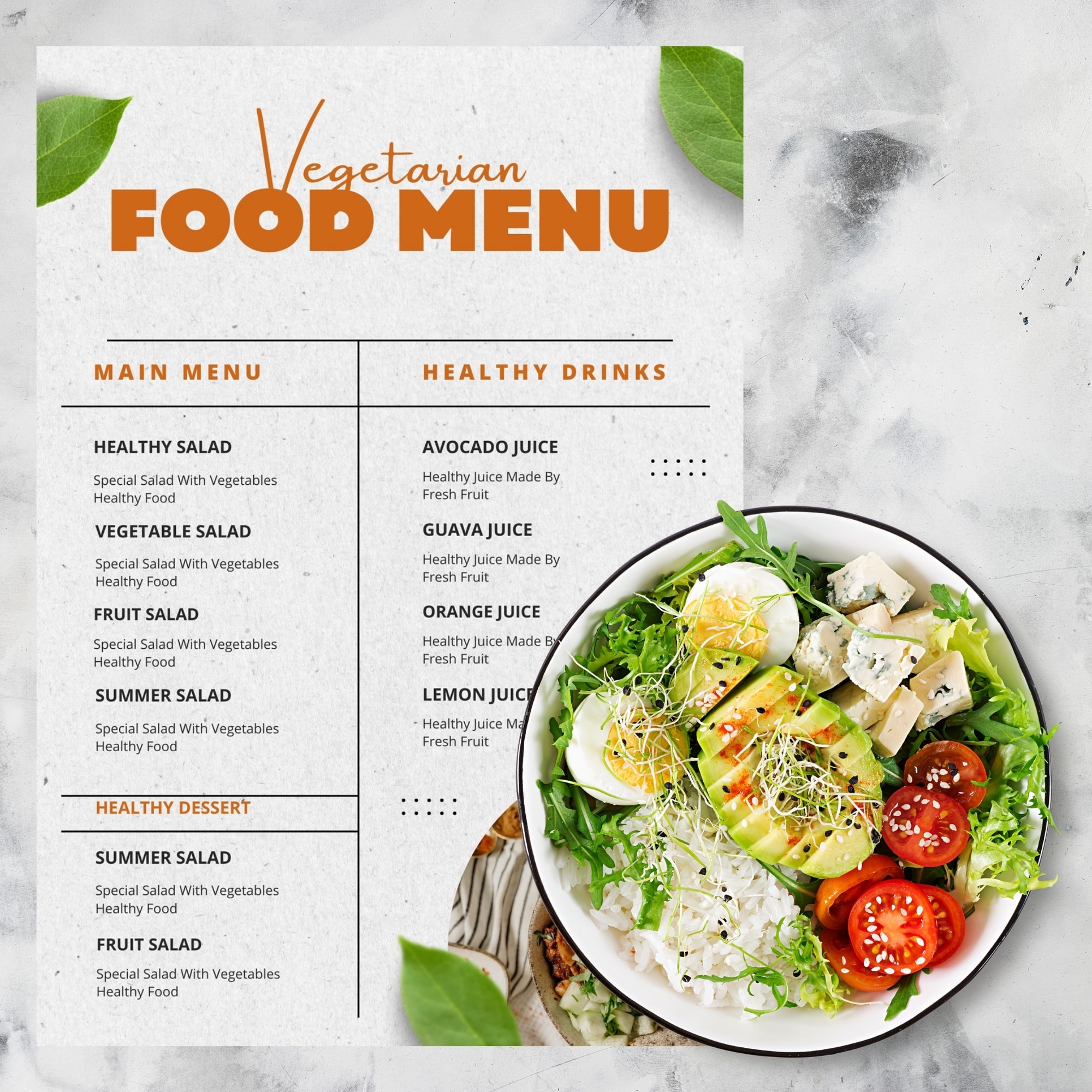
Embrace this chance to serve your health needs with every delicious bite.
Welcome to your new dietary ally while you're dealing with Chronic Kidney Disease.
Jump to:
- Key Takeaways
- Understanding Salt Restrictions
- Adjusting Protein Consumption
- Balancing Potassium Intake
- Controlling Phosphorus Levels
- Lowering Sodium in Meals
- Choosing Protein Sources
- Selecting Heart-Healthy Foods
- Managing Phosphorus in Diet
- Regulating Dietary Potassium
- Crafting Your Renal Menu
- FAQs for Renal Diet Menu Maker
- Renal Diet Menu Maker Options
Key Takeaways
- Limit salt intake and read labels to find sodium content
- Decrease protein intake and focus on vegetables and whole grains
- Monitor and balance potassium levels in the diet
- Control phosphorus intake and avoid foods high in phosphorus
For More Recipes and Ideas --->> Get Your Free Meals and Recipes That Are Perfect for Pre-Dialysis Diets, Pre-Dialysis with Diabetes, or Dialysis Diets.
Understanding Salt Restrictions
You need to be vigilant about the sodium hidden in foods, as labels often reveal higher amounts than you'd expect.
It's also crucial to understand the safety of salt substitutes, since some may contain potassium, which can be problematic for your kidneys.
Identify Hidden Sodium
Hidden sources of sodium can thwart your efforts to maintain a renal-friendly diet, so it's crucial to know where they lurk. Understanding sodium sources is key to managing your intake effectively:
- Sodium in processed foods: Often high in sodium for preservation, flavor, and texture.
- Sodium in condiments: Small amounts can add up quickly, significantly increasing sodium content.
- Sodium in restaurant meals: Frequently contains excessive sodium for taste enhancement.
- Sodium in canned foods: Preservation methods lead to higher sodium levels.
By being detail-oriented and patient-centric, you can navigate these challenges. Always look beyond the obvious and check labels meticulously.
As you strive to keep sodium in check, let's now consider the safety of salt substitutes to see if they can be a part of your diet. People with kidney disease have to be more careful. Keeping a food journal is also a good idea.
Safety of Salt Substitutes
While considering a low-sodium renal diet, it's essential to assess the safety of salt substitutes as they can contain potassium, which you may need to limit. Salt alternatives for renal diet often boast benefits such as flavor enhancement without added sodium, which can be critical for your health. However, the risks of using salt substitutes are particularly relevant if you have kidney problems that impair potassium excretion.
To choose a safe salt substitute, look for salt substitute alternatives that align with your dietary needs. It's crucial to read labels carefully to understand the potassium content. Consulting with your healthcare provider will ensure you're making informed decisions. Remember, the goal is to manage your health without compromising taste or safety.
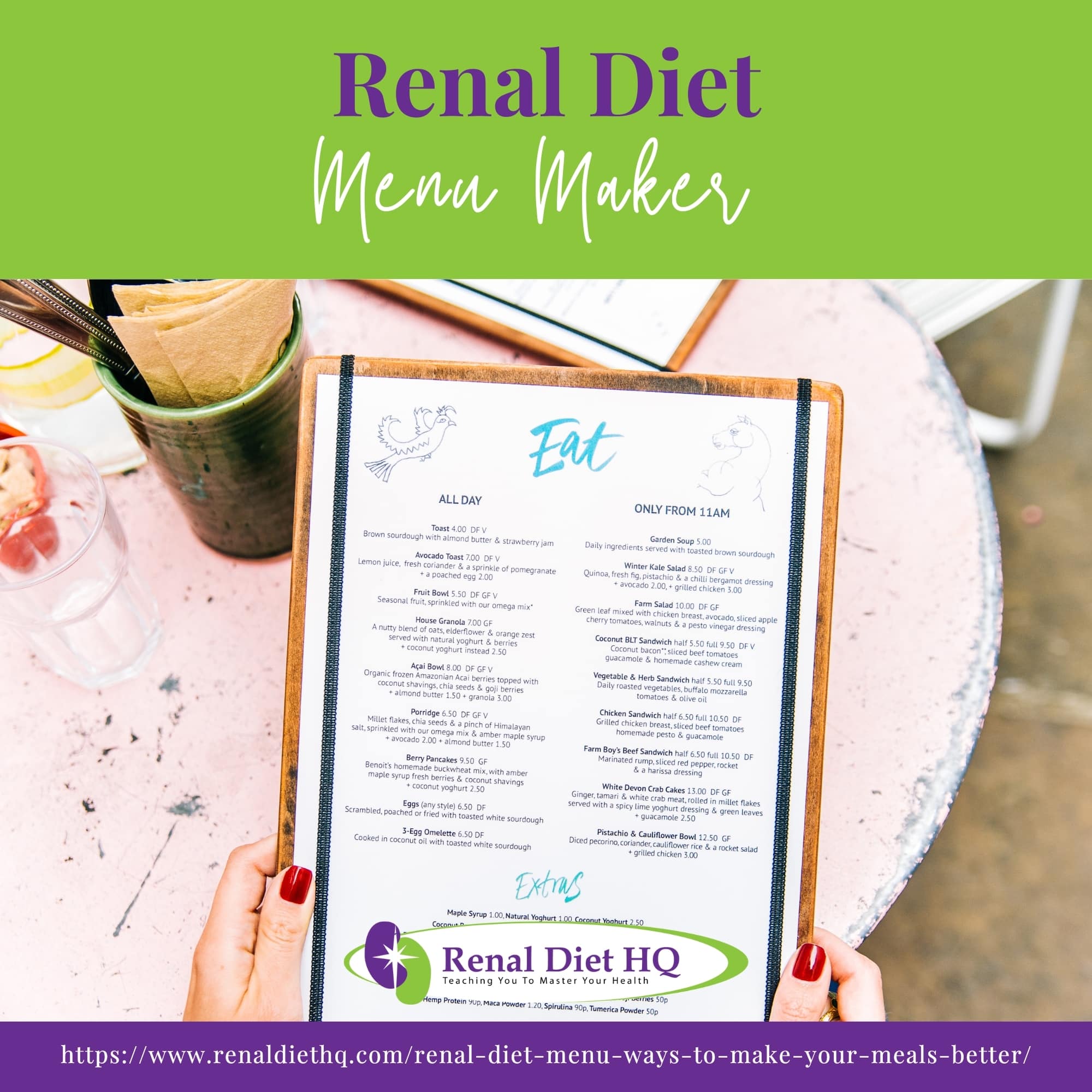
Adjusting Protein Consumption
When managing your renal diet, it's crucial to control your protein portions, as your kidneys need to maintain a careful balance.
You should consider both plant and animal proteins, understanding that a 150-pound male typically requires 55 grams per day, while a 135-pound female needs about 40 grams.
It's essential to prioritize high-quality protein sources and adjust portion sizes to meet your specific health needs without overburdening your kidneys.
Protein Portion Control
In managing your renal diet, it's crucial to adjust protein portions to meet specific dietary needs without overburdening your kidneys. Here's how you can practice protein portion control and ensure the safety of your meal choices:
- Identify Hidden Sodium: Scrutinize labels for hidden sodium sources, which can be detrimental to your kidneys.
- Evaluate Salt Substitutes: Consult your healthcare provider about the safety of salt substitutes to avoid excess potassium.
- Balance Protein Sources: Choose plant proteins over animal proteins when possible, as they're less taxing on your kidneys.
- Adjust Intake: Tailor your protein consumption according to your body's needs, always mindful of the delicate balance your kidneys maintain.
Plant Vs Animal Protein
You'll need to balance your intake of plant and animal proteins, opting for beans, nuts, and grains over chicken, fish, and meat to ease the strain on your kidneys. When considering protein sources, it's crucial to understand the different types and their effects on your health.
Plant proteins often come with heart healthy foods like fiber and fewer saturated fats, while animal proteins can be higher in these fats. Implementing portion control is essential, ensuring you receive enough protein without overburdening your kidneys.
Consider ingredient substitutions such as using legumes in place of meat in your favorite recipes. These adjustments not only support kidney health but also contribute to overall well-being.
Next, let's navigate the challenge of balancing potassium intake within your renal diet.
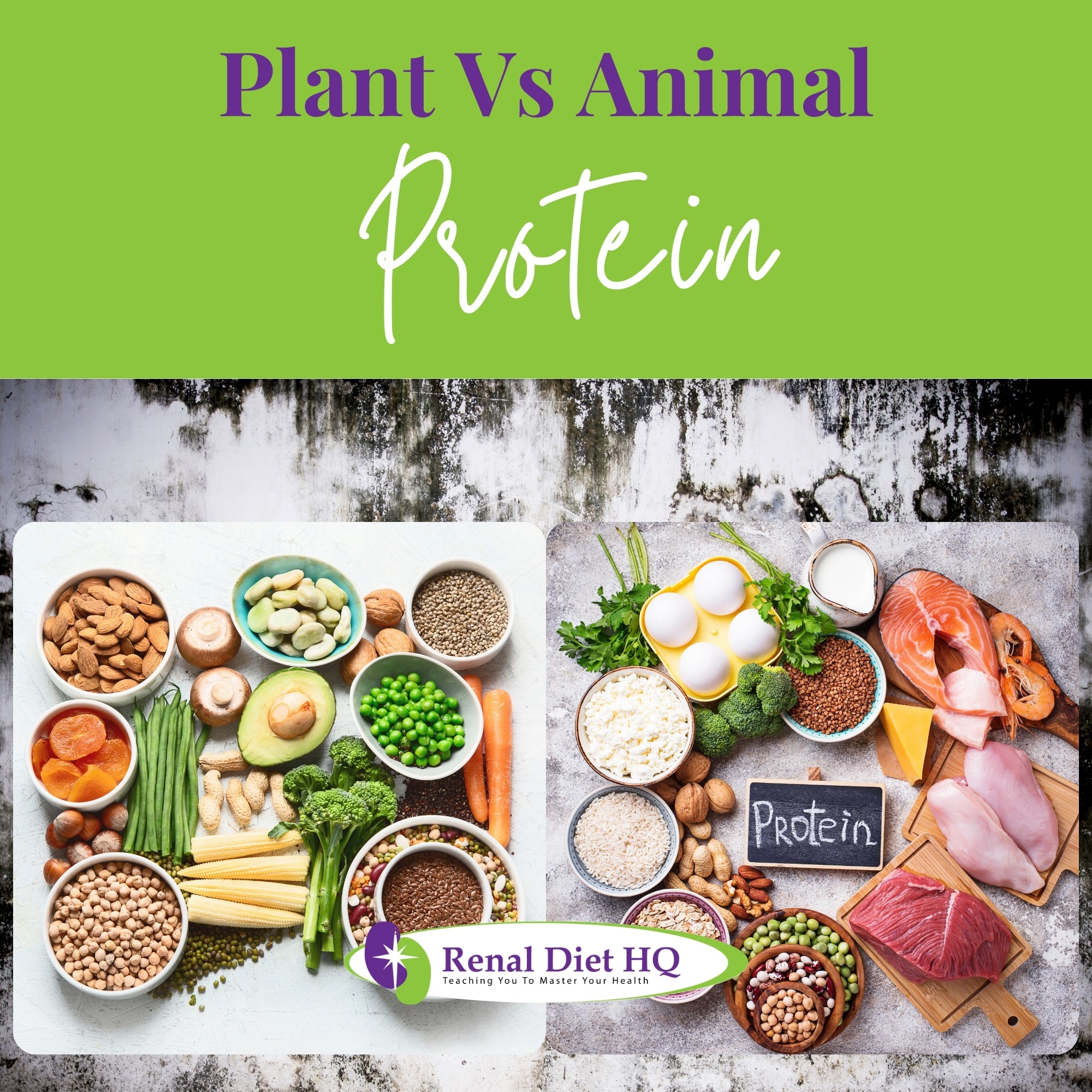
Balancing Potassium Intake
As you navigate your renal diet, it's crucial to keep a close eye on your potassium levels since your kidneys may not efficiently manage this mineral.
You'll need to choose low potassium foods more frequently, while still ensuring you're getting a balanced diet.
Regularly monitoring your potassium intake can help prevent complications and maintain your overall health.
Low Potassium Food Choices
Selecting low potassium foods is crucial to maintaining balance in your renal diet, ensuring your kidneys don't struggle with regulation. It's about making informed choices to manage your potassium balance, and that often means opting for low potassium fruits and steering clear of potassium-rich vegetables unless your healthcare provider has prescribed a potassium supplement. Diligent potassium monitoring is a non-negotiable part of your journey.
- Apples over Avocados: Savor the sweetness of apples, which are lower in potassium, over avocados which are much higher.
- Rice over Potatoes: Enjoy the versatility of rice, a safer staple that won't disrupt your potassium levels.
- Peppers over Spinach: Add color to your plate with bell peppers, and leave the high-potassium spinach for others.
- Blueberries over Bananas: Indulge in blueberries for your fruit fix, rather than potassium-dense bananas.
Monitor Potassium Levels
Continuing your management of a renal diet, it's essential to closely monitor your potassium levels to maintain the delicate balance your kidneys require. Understanding potassium balance is crucial as both deficiency and excess can lead to health issues.
| Aspect | Consideration | Tips |
|---|---|---|
| Potassium Rich Foods | Be mindful of fruits, vegetables, and legumes | Opt for lower potassium alternatives |
| Potassium Monitoring Techniques | Regular blood tests, dietary tracking | Consult healthcare providers |
| Potassium in Beverages | Limit consumption of high-potassium drinks | Choose water and specific low-potassium options |
Remember to discuss potassium supplements with your healthcare team, as they may affect your balance. Now, let's shift focus to controlling phosphorus levels, another key aspect of your renal diet.
Controlling Phosphorus Levels
When managing your kidney health, it's crucial to limit foods high in phosphorus, such as dark colas, chocolate, and dairy products.
You'll need to read labels carefully, as many packaged goods have added phosphorus that can exceed your daily limits.
If necessary, your healthcare provider might prescribe a phosphate binder to take with meals, ensuring your phosphorus levels stay under control.
Phosphorus-Rich Foods Avoidance
You'll need to avoid certain foods high in phosphorus, such as dark colas, to better manage your renal diet. By avoiding phosphorus-rich foods, you're protecting your kidneys and maintaining a healthier balance.
It's crucial to also manage potassium intake and monitor sodium levels to prevent further complications. Explore renal diet recipes that offer protein alternatives, ensuring your nutritional needs are met without overtaxing your kidneys.
Here are four key aspects to consider:
- Limit dairy products and processed foods high in phosphorus.
- Choose fruits and vegetables with lower potassium content.
- Incorporate protein from plant sources, like beans and nuts.
- Regularly check food labels for hidden phosphorus and sodium.
Next, let's explore how phosphate binders can complement these dietary adjustments.
Phosphate Binder Usage
To effectively control your phosphorus levels on a renal diet, you may need to use phosphate binders in conjunction with dietary changes. These binders can limit the absorption of phosphorus from your meals.
However, it's crucial to explore phosphate binder alternatives if medication isn't suitable.
Simultaneously, understanding the benefits of salt reduction will help safeguard your kidneys, as high sodium intake exacerbates hypertension, a common issue for renal patients.
Moreover, moderating your protein consumption is vital to reduce the impact of protein on kidney function. Consider low protein meal ideas and integrate potassium friendly recipes into your diet, which can help maintain electrolyte balance.
As you navigate these dietary adjustments, it's also important to focus on lowering sodium in meals, which we'll discuss next.
Lowering Sodium in Meals
To reduce your sodium intake effectively, focus on incorporating fresh foods over packaged options, which often contain high levels of added sodium.
Experiment with salt-free spice blends to add flavor to your dishes without compromising your renal health.
Fresh Foods Over Packaged
Choosing fresh foods over packaged options is a critical step in reducing your sodium intake on a renal diet. You're not just making a choice for better health; you're empowering yourself with understanding sodium content, avoiding excessive sodium in processed foods, and recognizing the impact of salt substitutes.
When comparing protein sources, remember that fresh cuts of meat have less sodium than packaged ones. Let's not forget the importance of portion control for protein, it's not just what you eat, but how much.
- Embrace the vibrant colors and natural flavors of fresh produce, touching the very essence of nourishment.
- Feel the satisfaction of preparing meals that support your body's needs, fostering a sense of control and well-being.
- Savor the wholesomeness of home-cooked dishes, knowing you're limiting harmful sodium levels.
- Experience the peace of mind that comes with informed choices, directly impacting your renal health positively.
Using Salt-Free Spice Blends
Incorporating salt-free spice blends into your meals is a seamless transition that enhances flavor without increasing your sodium intake. When you're dedicated to serving others with dietary restrictions, it's vital to explore salt alternatives that provide robust flavors.
Utilizing spices for flavor not only adheres to low sodium seasonings guidelines but also opens up a world of culinary possibilities.
Focus on salt-free cooking options like herb mixtures, citrus zests, and vinegar to elevate dishes. These approaches are integral in enhancing taste without salt, ensuring meals aren't only healthful but also enjoyable.
Choosing Protein Sources
When managing your renal diet, it's essential to select the right types of protein while keeping an eye on portion sizes. You'll need to balance your intake between animal and plant proteins, aiming for small, measured amounts like 2 to 3 ounces of chicken, fish, or meat.
Always remember to factor in your individual protein needs, which may be lower than the average due to your kidney health.
Optimal Protein Types
As you create your renal diet menu, it's essential to select protein sources with care, focusing on a mix of both animal and plant-based options that'll suit your dietary restrictions. Here's a guideline to inspire and support you:
- Explore Protein Alternatives: Embrace the variety of plant-based proteins like legumes and tofu, which can be gentler on your kidneys than some animal proteins.
- Use Flavor Enhancers: Experiment with sodium-free seasonings and herbs to add zest to your meals without compromising your health.
- Choose Potassium Rich Fruits Wisely: Integrate low-potassium fruits like berries and apples for a nutritious, kidney-friendly diet.
- Craft Phosphorus Friendly Recipes: Seek out meals that use non-dairy alternatives and phosphorus-controlled ingredients to protect your renal function.
Paying Attention to Portion Size
Managing your protein portions is crucial when choosing sources for your renal diet to ensure you're getting the right amount without overburdening your kidneys. Understanding portion control can make a significant difference. You'll want to consider protein variety, incorporating both plant and animal sources, while also being mindful of sodium alternatives, potassium management, and phosphorus restrictions.
Here's a quick reference table:
| Food Type | Portion Size | Notes |
|---|---|---|
| Chicken | 2-3 oz | Low phosphorus; opt for sodium-free seasonings |
| Fish | 2-3 oz | Rich in healthy fats; monitor for potassium content |
| Red Meat | 2-3 oz | Higher in phosphorus; limit intake |
| Beans | ½ cup | Plant protein; choose low-sodium canned options |
| Dairy | ¼ cup | High in phosphorus; seek alternatives like rice milk |
Tailor your meals with care, focusing on the right balance for your health.
Selecting Heart-Healthy Foods
As you craft your renal diet menu, prioritizing heart-healthy options is essential.
Opt for lean proteins like skinless poultry and fish, which support your heart without overburdening your kidneys.
It's also important to monitor and limit your intake of saturated fats to manage both your cardiovascular and renal health efficiently.
Choose Lean Proteins
When selecting heart-healthy foods for your renal diet, opt for lean proteins like skinless poultry, fish, and plant-based options. Understanding protein requirements is crucial for maintaining kidney health without overburdening your system.
Explore protein alternatives and incorporate protein-rich plant-based options such as lentils, chickpeas, and tofu. Utilize cooking methods for lean proteins that preserve their nutritional value while minimizing unhealthy fats, like grilling, baking, or steaming. Lastly, embrace protein portion control strategies to ensure you're eating just enough to meet your body's needs without excess.
- Embrace the variety of protein alternatives available.
- Master cooking methods that highlight the natural flavors of lean proteins.
- Discover the satiety and health benefits of protein-rich plant-based options.
- Apply protein portion control strategies to foster a sense of well-being and control in your dietary choices.
Limit Saturated Fats
You'll need to keep your saturated fat intake to a minimum, as it's crucial for your heart health and managing your kidney condition. Understanding fat types is key.
Saturated fats are found in foods like butter, cheese, and fatty meats, contributing to heart disease. Focus on reducing saturated fats and opting for healthy fat alternatives such as avocados, nuts, and olive oil.
When preparing meals, employ cooking methods for low-fat meals like grilling, baking, or using non-stick pans with minimal oil. Become adept at reading food labels for fat content, ensuring you're making informed choices that support your well-being.
Now, let's segue into managing phosphorus in your diet, another vital aspect of your renal health.
Managing Phosphorus in Diet
When managing your kidney health, it's crucial to control your phosphorus intake, as high levels can lead to bone and heart issues.
You'll need to steer clear of foods rich in phosphorus, such as certain dairy products, nuts, and processed meats.
If your doctor prescribes a phosphate binder, take it with meals to effectively reduce phosphorus absorption in your body as you deal with renal disease.
Phosphorus-Rich Foods Avoidance
To manage your phosphorus levels effectively, it's crucial to avoid foods high in this mineral, such as dark colas, chocolate, and dairy products. Here are some strategies for dietary phosphorus control:
- Experiment with phosphorus free recipe options that delight your palate while safeguarding your health.
- Educate yourself on phosphorus awareness and seek out phosphorus rich foods alternatives.
- Commit to managing phosphorus levels effectively by reading labels meticulously.
- Embrace a diet that includes plenty of fruits, vegetables, and grains, which are lower in phosphorus.
Your diligence in avoiding high-phosphorus foods not only supports your kidney health but also demonstrates your dedication to those you serve.
Let's now explore how phosphate binders can further assist in managing your dietary phosphorus.
Phosphate Binder Usage
In managing your diet for phosphorus control, you might need to rely on phosphate binders during meals. These agents play a critical role in your renal diet by blocking the absorption of phosphorus from the foods you eat. However, long-term phosphate binder use requires careful monitoring due to potential side effects, such as gastrointestinal issues or imbalances in other minerals.
To minimize these risks, explore phosphate binder alternatives and natural ways to lower phosphorus levels. For instance, focusing on phosphorus-limited foods and cooking methods that reduce phosphorus availability can be effective strategies.
Always work closely with your healthcare provider to tailor your approach, ensuring the interventions align with your needs and contribute positively to your overall health.
Regulating Dietary Potassium
As you navigate your renal diet, it's crucial to monitor your potassium sources carefully. You'll need to strike a balance between high and low potassium foods to maintain optimal levels for kidney health.
Pay close attention to your intake, as too much potassium can be as detrimental as too little.
Monitor Potassium Sources
You'll need to keep a close eye on your potassium sources, as too much can be as harmful as too little for your kidneys. Understanding potassium levels is vital for maintaining a healthy potassium balance. Be cautious with potassium-rich foods like bananas, oranges, and potatoes.
If you're considering potassium supplements, always consult with your healthcare provider. Regular potassium monitoring is key in managing your renal health.
- Empathy: Remember, you're not just managing a diet, you're caring for someone's well-being.
- Vigilance: Stay alert to changes in potassium levels to prevent complications.
- Education: Learn about foods and their potassium content to make informed choices.
- Support: Offer encouragement and assistance in meal planning to ensure a balanced intake.
Balance High-Low Potassium Foods
To effectively manage your kidney health, it's crucial to strike a balance between high and low-potassium foods in your renal diet. Understanding potassium restrictions is key, and you'll want to monitor potassium levels regularly. When incorporating low-potassium foods, you're not just following a diet, you're caring for your body's intricate needs.
Here's a table to guide you:
| Low Potassium Foods | High Potassium Foods | Potassium Rich Food Alternatives |
|---|---|---|
| Apples | Bananas | Applesauce |
| Rice | Potatoes | Cauliflower mash |
| Bell peppers | Oranges | Red bell pepper strips |
| Bread (white) | Tomatoes | Pita bread |
| Green beans | Spinach | Frozen green beans |
Be mindful of potassium and medication interactions, and always consult with your healthcare provider when making any changes to your diet or medication regimen. Your dedication to serving your health is commendable.
Crafting Your Renal Menu
As you craft your renal menu, it's crucial to tailor meal plans that cater specifically to your health needs, incorporating appropriate ingredient substitutions.
You'll need to carefully select low-sodium, low-potassium, and low-phosphorus foods while maintaining a balanced intake of protein.
Personalized Meal Planning
Crafting your renal menu involves selecting foods that manage your sodium, potassium, and phosphorus intake while ensuring you're getting the right amount of protein. Understanding nutritional needs is crucial, as is finding balance with meal prep tips that work for your lifestyle.
Here's how you can take charge:
- Embrace grocery shopping tips, choosing fresh produce over canned goods to cut down on sodium.
- Keep healthy snacking options at hand to avoid high-potassium pitfalls.
- Learn dining-out strategies, such as asking for dressings on the side to control intake.
- Master meal prep to make adherence to your renal diet second nature.
Now, let's look at how ingredient substitutions can keep your meals exciting and kidney-friendly.
Ingredient Substitutions
When creating your renal menu, you'll find that smart ingredient swaps can significantly reduce sodium, potassium, and phosphorus without sacrificing flavor. Opt for heart-healthy cooking techniques such as grilling or baking, and use herbs instead of salt or salt substitutes, which may contain high potassium levels.
Tailor your protein sources, choosing smaller portions of high-quality animal proteins, and complement them with plant-based options like legumes, which offer protein without the excess phosphorus found in phosphorus-rich foods.
Personalized meal planning is crucial; it allows you to monitor and adjust your intake of these nutrients carefully. Remember, the goal is to support your renal health while also enjoying delicious and nourishing meals.
FAQs for Renal Diet Menu Maker
When dining out, start with restaurant research to find cuisine types that offer renal-friendly options. Practice portion control and opt for smaller servings.
Communicate your dietary needs clearly to the staff, emphasize sauce avoidance as they're often high in sodium and potassium. Ask about cooking methods and request modifications when necessary.
Your vigilance helps maintain health while enjoying a meal, serving your well-being with every careful choice you make.
To maintain mealtime magic while managing a renal diet, there are a few key strategies to keep in mind.
First, focus on flavorful herbs to zest up your dishes. By using herbs like basil, thyme, and parsley, you can add a burst of taste without relying on excessive salt or sodium.
Next, it's important to master diverse cooking techniques like steaming. Steaming helps to retain nutrients and flavors in your food, making it a great option for those on a renal diet.
Another crucial aspect is patient-centric meal planning. By taking the time to plan your meals with your specific dietary needs in mind, you can ensure that you have the right balance of nutrients and flavors on your plate.
Exploring ingredient substitutions can be key. For example, using cauliflower as a substitute for potatoes can help to reduce potassium intake while still enjoying a similar texture and taste.
Don't be afraid to embrace cultural adaptations. Many different cuisines offer dishes that align with renal dietary needs. By exploring new cuisines and finding recipes that work for you, you can serve up variety and enjoyment on your plate.
When you're facing social events, communicate your dietary needs beforehand. Share food preparation tips with hosts or bring your own personal snacks to stay within your renal diet.
Surround yourself with supportive friends who respect your dietary advocacy, ensuring you're not alone in managing your health. When you plan ahead, you can enjoy gatherings without compromising your diet, showing care for both your wellbeing and the effort of those serving you.
Renal Diet Menu Maker Options
You've now embarked on the ultimate culinary voyage, steering your taste buds through a sea of restrictions to the promised land of kidney health.
Armed with the Renal Diet Menu Maker, you're not just surviving, you're thriving, crafting delectable heart-healthy dishes that cater to your body's needs.
With each carefully measured bite, you're conquering the kidney care world, one flavorful, nutrient-balanced meal at a time.
Celebrate your commitment, your kidneys are toasting to your success!
Diabetes and Kidney Failure Renal Diet Menu
Click on one of the above links to find out more!
Related articles
- How a Renal Pre-Dialysis Diet Is Going To Help You(renaldiethq.com)


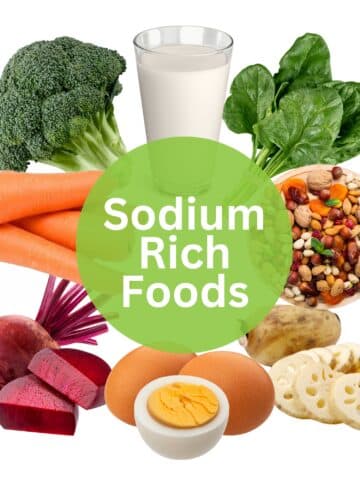
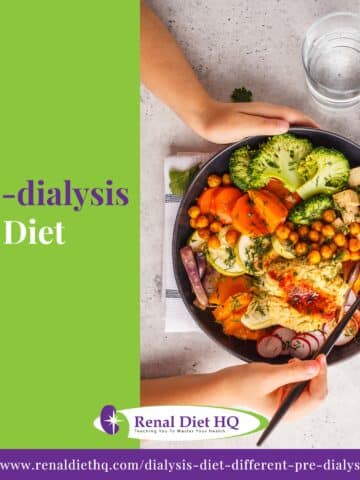

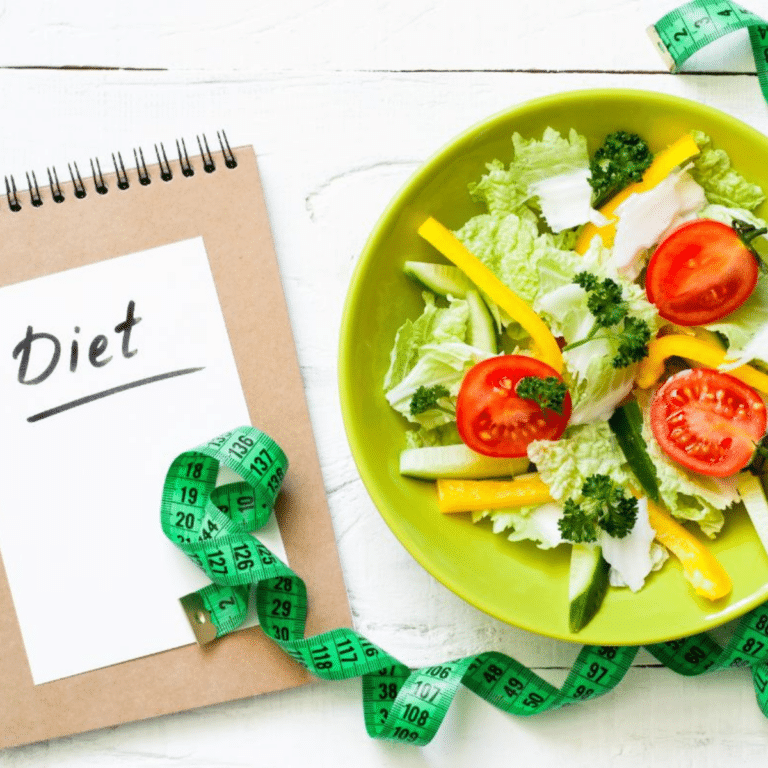
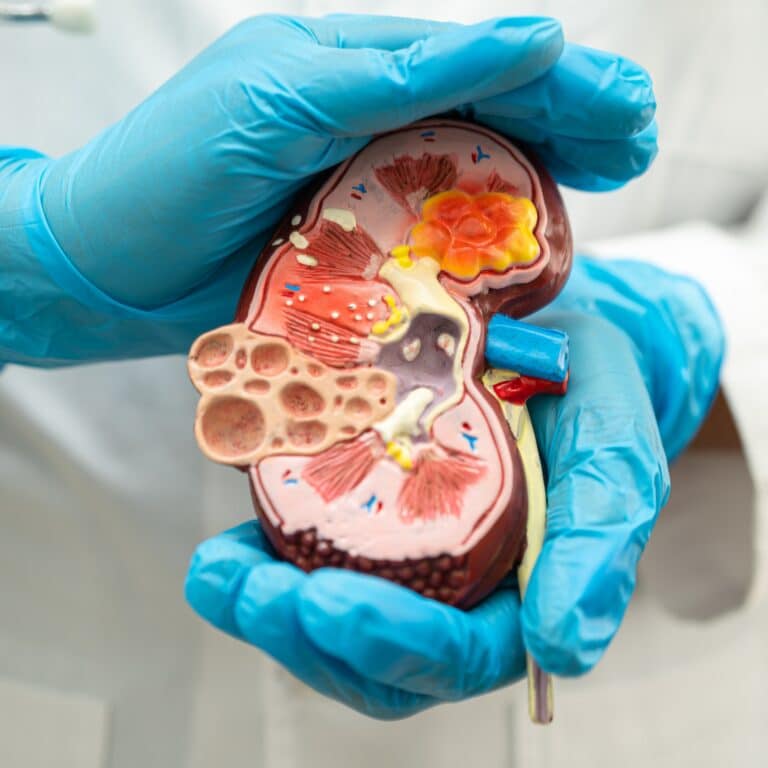

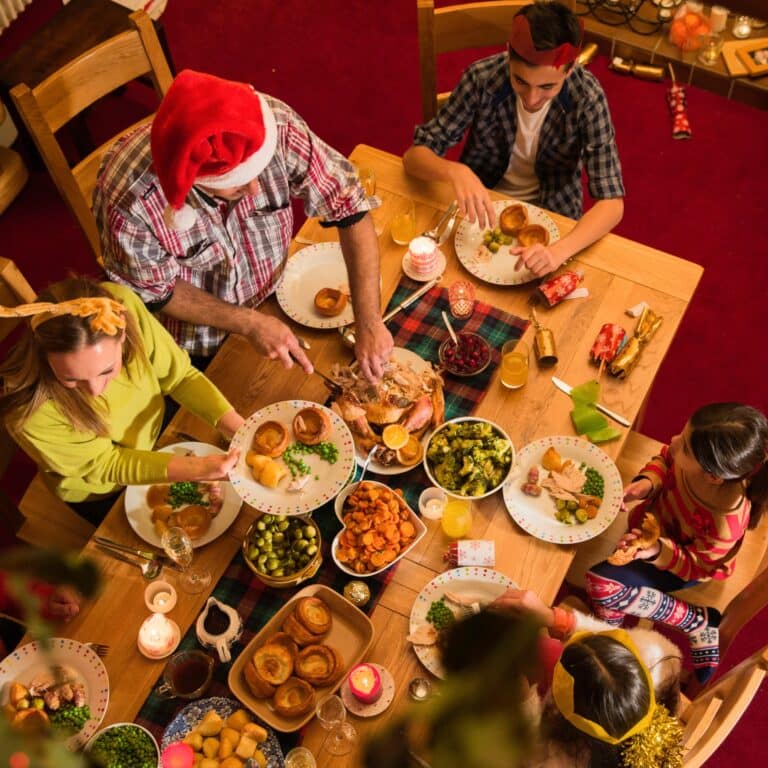
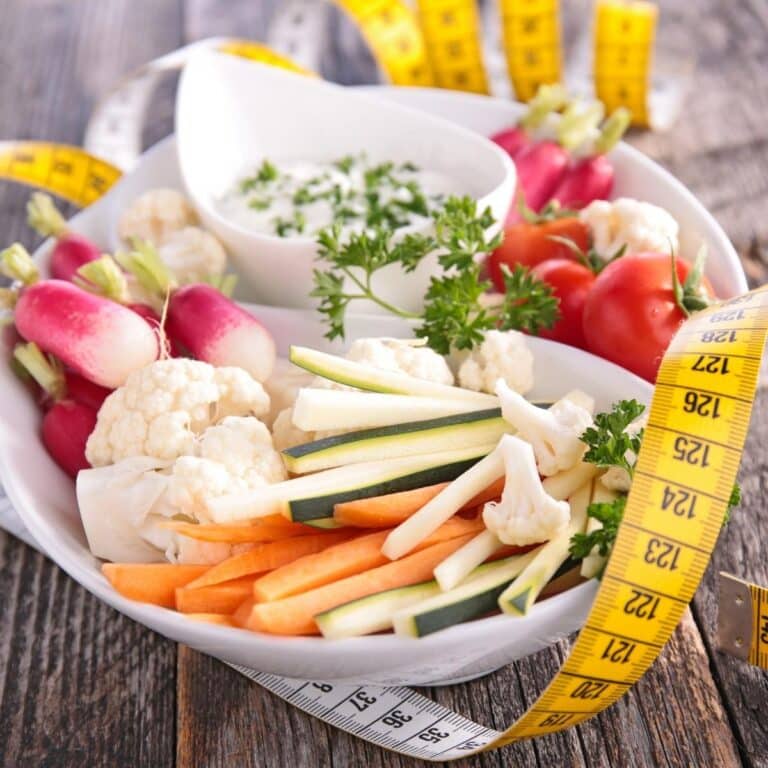
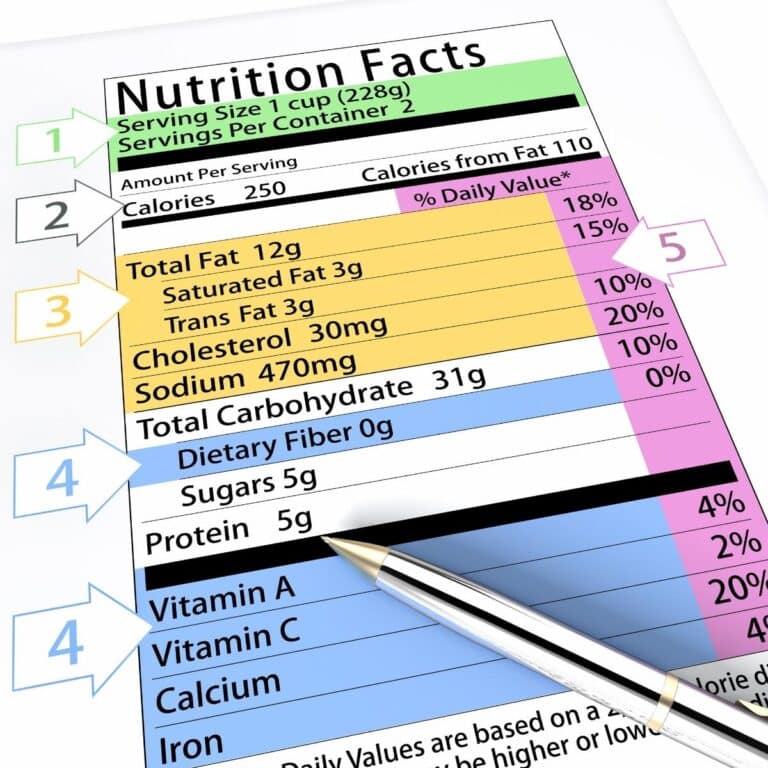
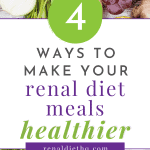
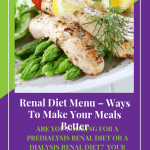





Thank you for putting this information about renal diet is great news